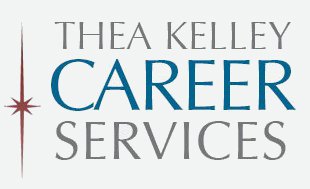 Whether you’re 25 years old, 40, or 55, career change is possible when you apply a combination of strategy and perseverance.
Whether you’re 25 years old, 40, or 55, career change is possible when you apply a combination of strategy and perseverance.
The first thing you need to do it to recognize that career change is usually an incremental process. You probably won’t go from finance to public relations or from engineering to nonprofit management in one leap. You’ll need to patiently complete a number of steps, as described below.
You can remember these steps as R.E.N.E.W.–Research, Education, Networking, Experience, Win.
Research: Get clear on your goal.
At this stage you may be trying to decide between two similar job titles, two very different ones – nonprofit manager vs. engineer – or you may really have no idea. Some ways to clarify your goal include:
- Use the free Skills Profiler at CareerOneStop to create a list of your skills and match them to jobs.
- Request informational meetings with people who are doing work that interests you. If you don’t know any such people, see Networking, below.
- Consider job shadowing as another way to get a feel for an occupation that interests you. If you’re a student, your school’s career services office may be able to help you arrange this. Otherwise, you might bring it up after an informational interview.
- Work with a career counselor or career path coach, either privately or through your alma mater or your local community college. (In some states such as California, state residents are entitled to use community college career services free of charge even if they’re not alumni.)
- Try volunteering or an internship (see “Experience: Get it, however you can,” below) as a way of experimenting with a career you’re interested in but not sure about.
Once you’ve decided, commit to your goal and demonstrate your commitment. Employers want team members who are passionate about their career, not just trying it out. The following steps–not necessarily to be taken in this order–will prove you’re serious and prepare you for success.
Education: Fill your skills gaps and update your education.
If the postings keep listing skills or education you don’t have, there are ways to gain them: independent study, tutorials, classes.
Complete a project you can show as a work sample. Consider earning a certification or even a degree. There are many areas in life where it’s wise to be frugal, but investing in your career is usually not one of them.
Networking: Meet people in your new field, learn from them and be visibly available for opportunities.
If there’s a professional association for your desired occupation, join it, attend the events, volunteer–a great way to get to know people quicker while building good will–and ask for advice. Membership fees can cost hundreds of dollars, but if you participate fully you’ll probably find it’s worth every penny as a networking and learning opportunity and a resume builder.
Also look for online groups–LinkedIn groups, meetups, e-lists and so on. Then look for opportunities to build those relationships out, beyond the computer screen.
Learn how to network effectively. The better you are at it, the more you’ll find you can actually enjoy it as well as benefitting from it.
Experience: Get it, however you can.
If it doesn’t seem likely that you can jump straight into your desired job, consider a “bridge job”: one that takes you closer to your dream job by giving you the time, connections or skills to get there. For example: Ella was a editorial assistant who wanted to be a corporate trainer. She landed a job writing manuals for a nonprofit that provided training, volunteered to assist and finally facilitate at trainings, and within a few years made the switch into corporate training.
Another type of bridge job is an internship. These opportunities aren’t just for young people any more. Growing numbers of companies are offering internships for older people. If a company doesn’t offer them, you may be able to convince a hiring manager that the arrangement would be a win-win. Networking and informational interviewing can lead to opportunities for such a conversation.
Volunteering is another great way to build skills and to be able to list a closely-related job title at the top of your resume. (Yes, you can include it in the same section with your previous work as long as you head the section simply “Experience” rather than “Professional Experience.”) Look for skills-based volunteer opportunities.
Win a job in your new career: Working with good job search resources.
Reentering the job market is a tough job that calls for good tools, including a resume. I thought of heading this section “Write,” but it’s more than just writing. Besides, in order to write a top-flight resume you really need to “Work With” a good how-to book at the least, or better yet a top-flight resume writer who knows how to present you strategically.
Here are the tools you may need to Win:
Networking bio: There can be a fine line between an info interview or networking conversation on the one hand, and a job interview on the other. If you’re talking with someone who might at some point be able to refer you into a job, but there is no specific opening on the table, it’s better to leave behind a brief bio instead of a resume. That way, if and when a position opens up, you can send an updated, appropriately targeted resume at that later date.
Resume and cover letter(s): A homemade, “not bad” resume might be good enough for some job searches, but a career change resume is trickier and calls for the best resume possible. Either work with a top-flight resume writer or resume coach (expect to pay at least $400-$1,000+ depending on your occupation, experience and level) or, if you’re sure you have the skills to do it yourself, read a good, up to date how-to book like Modernize Your Resume by Wendy Enelow and Louise Kursmark. Either way, make the last step is professional proofreading, which is a no-brainer given that many good proofreaders charge less than $10 per page. Even professional writers make errors.
While you’re at it, get help to create a compelling cover letter as well. Plan to target it to specific opportunities, since the most important part of a cover letter is the part you can’t write in advance: the part where you show that you’ve carefully read and understood the job posting, you’ve researched the company, and you are truly excited about this role and company in particular. A generic cover letter is barely worth including.
LinkedIn Profile: Most excellent resume writers write LinkedIn profiles as well, and a package deal is more economical than putting off the profile “until later.” If you want to do it yourself there are excellent how-to books on the market. Or, since LinkedIn changes so fast, study online resources instead. I recommend subscribing to the excellent LinkedIn tips newsletter by Wayne Breitbarth. Also subscribe to the blog you’re reading right now, since I often share useful LinkedIn techniques as well as tips about every other aspect of job search. Subscribe and get a free gift.
Interview Skills: Don’t wait until a recruiter is on the phone – or worse yet, until you’ve failed at an interview – to work on your interview skills. Why not get it right the first time? Interview coaching pays for itself many times over. As a side benefit, it’s likely to help you feel more prepared for those networking conversations, and in developing stories for your interviews you may discover new material for your resume and profile. For the do-it-yourselfer: read my Amazon bestseller, Get That Job! The Quick and Complete Guide to a Winning Interview.
Keep moving toward your goal.
Changing careers is rarely quick or easy, but you’ll get there if you consistently take these steps. Do something every day that takes you closer to your successful career change and doing the work you’ll love to do. (This post has been updated from its 2022 publishing.)


I like how you said to don’t wait until a recruiter is on the phone when you are looking for a new job. As far as I know, doing some research about the company that you are applying to will help you once you get your first interview. It would be great that my niece gets this advice before her first interview for his first job.
Right, Derek! The research can even help with targeting her resume and writing a good cover letter, all of which gives her a much better shot at the job.
It can never be easy to make a successful career change. Finding your passion and make that passion your profession will allow you to make unbelievable growth. Not every juncture is a career transition juncture. That’s why it is important to spot the right time. Right transition will make you. Wrong transition can break you. So, it is imperative to follow all the protocols while making a job change. I would like to thank the author for sharing some invaluable job change guidelines.